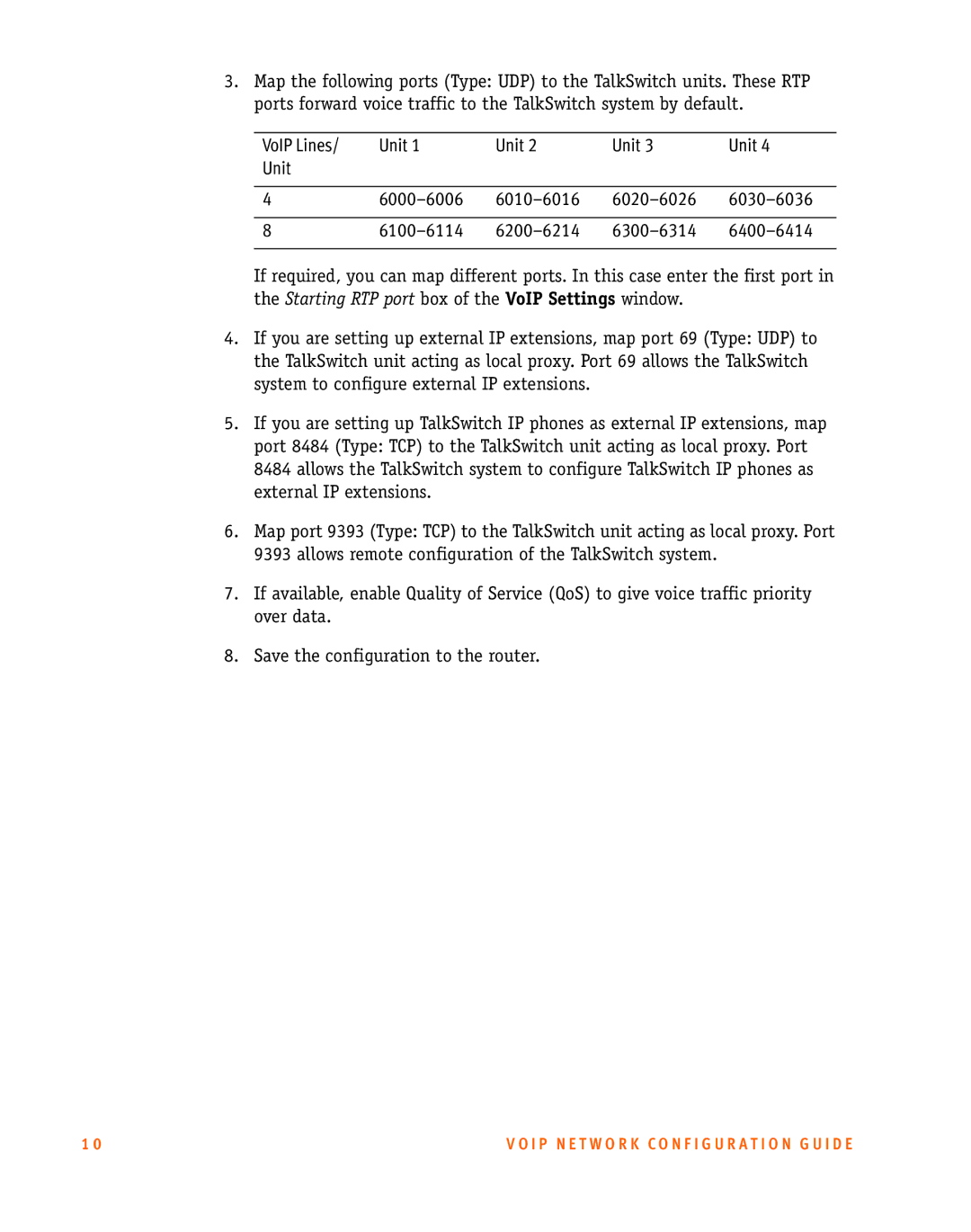3.Map the following ports (Type: UDP) to the TalkSwitch units. These RTP ports forward voice traffic to the TalkSwitch system by default.
VoIP Lines/ | Unit 1 | Unit 2 | Unit 3 | Unit 4 |
Unit |
|
|
|
|
|
|
|
|
|
4 | ||||
|
|
|
|
|
8 | ||||
|
|
|
|
|
If required, you can map different ports. In this case enter the first port in the Starting RTP port box of the VoIP Settings window.
4.If you are setting up external IP extensions, map port 69 (Type: UDP) to the TalkSwitch unit acting as local proxy. Port 69 allows the TalkSwitch system to configure external IP extensions.
5.If you are setting up TalkSwitch IP phones as external IP extensions, map port 8484 (Type: TCP) to the TalkSwitch unit acting as local proxy. Port 8484 allows the TalkSwitch system to configure TalkSwitch IP phones as external IP extensions.
6.Map port 9393 (Type: TCP) to the TalkSwitch unit acting as local proxy. Port 9393 allows remote configuration of the TalkSwitch system.
7.If available, enable Quality of Service (QoS) to give voice traffic priority over data.
8.Save the configuration to the router.
1 0 | V O I P N E T W O R K C O N F I G U R A T I O N G U I D E |
